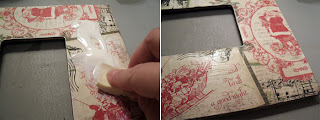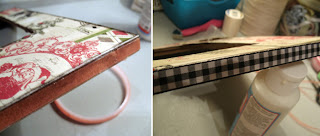Make the Act of Writing Easier
Writing by hand is hard work! Many children shy away from writing simply because of the time and energy involved in putting pencil to paper. Like any skill, handwriting becomes easier the more that you practice, but getting your child to practice is often easier said than done.
 Parents can make handwriting easier by helping their child develop the fine motor skills that are necessary for writing. Puzzles, modeling clay and dough, stringing beads and lacing and other games can exercise these muscles and help develop hand-eye coordination without seeming too much like work.
Parents can make handwriting easier by helping their child develop the fine motor skills that are necessary for writing. Puzzles, modeling clay and dough, stringing beads and lacing and other games can exercise these muscles and help develop hand-eye coordination without seeming too much like work.Start small when encouraging your older children to practice their handwriting so that they can develop stamina without being too discouraged. Even a few minutes of practice a day can help them improve their handwriting skills. Help them make captions for their artwork or ask them to help make shopping or to-do lists. Play games like hangman, Boggle or Mad-Libs that incorporate writing in a fun way.
Keyboarding and typing are useful skills for older children, but should not take the place of handwriting practice. Writing by hand helps children develop neural pathways that are important for their future learning. Keyboarding should only be introduced as an aid to writing after handwriting has been firmly established.
Use Imaginative Play to Help Your Child Develop Narratives
Imaginative play is popular with early childhood educators because it’s one of the best ways to help children increase the complexity and structure of their inner narratives. Pretend play helps children develop rich inner narratives and to learn how to communicate them to their playmates.
Make Writing a Part of Everyday Life
Here are a few ideas to incorporate writing into your child’s daily routine:
Give them a notebook or journal for writing down their thoughts. It doesn’t have to be expensive, but often something that seems fancy or grown-up to a child can capture their imagination. Special diaries with locks or invisible ink are irresistible to most children.
Encourage them to send letters, cards and artwork to family and friends. They don’t have to be distant friends – dropping off a handwritten card to an elderly neighbor or classmate can be just as special and provide immediate feedback that will motivate your child to write more.
Find toys that encourage writing that they can use as props in their imaginative play. A whiteboard or chalkboard or easel can be used to play school, be a menu board for a restaurant, a for sale sign, an advertisement for their play or a danger sign.
Let your child make and display handwritten signs for their room.
Give your child prompts to help them come up with their own short stories or poems. Allow them to read them to the family at the dinner table or during family time.
Help your child get an advantage in school and career by giving them plenty of opportunity to practice their writing skills in a way that is fun and natural to them. Even a few minutes of writing practice each day can be enough to help them become comfortable and fluid writers.
Jacob Maslow is a father of five who has had a lot of practice in helping children learn how to write. He works for online retailer, Today’s Concept: which sells a wide variety of educational and fun toys that ignite children’s imaginations, including the always popular line of Melissa and Doug puppet theaters and puppets.


















